TERMS OF USE: There is a chance that some of the content on this page has changed since it was last updated. By reading this article, you consent to our Terms of Use and Disclaimer. Happy Travels!
DISCLOSURE: Some of our posts may contain affiliate links which we may receive a commission if you choose to book something through one of our links.
Discover the most famous and traditional Sri Lankan dishes that we tried, loved and can't WAIT to return to get a second helping of.
Sri Lankan food – one of the best we tried in all of Asia!
These guys sure KNOW how to cook! They'll take any fruit, vegetable or meat, and create the most delicious curry out of it. The ubiquitous “Rice and Curry” is the staple in Sri Lanka, but don't let the simplicity of its name put you off – every single curry we tried tasted different each time.
And if you can handle your spices, you're in for a big treat! Sri Lankan food is hot – it's one of the spiciest foods we've tried on the entire planet: the super tasty deviled prawns will particularly rock your taste buds!
Other notable culinary memories for us in Sri Lanka included lots of coconut flavours, exotic fruits like jackfruit, seafood, and as we said above, a whole arsenal of spices!
How did traditional Sri Lankan food originate?
Sri Lanka is a lush and fertile island brimming with vegetation that has been used for centuries, as well as plenty of delicious seafood from the waters surrounding the island. Rice, coconut and seafood are three main staples of Sri Lankan cuisine, along with the many spices that originated here. Because of the deep harbors surrounding the island, Sri Lanka was an important part of the famous Silk Road trade route – bringing people (and ingredients) from many different cultures to the country, which also influenced the cuisine.
The Portuguese, Dutch and English colonizers all had a big impact on the culture and food of Sri Lanka as well, much of which can still be seen today, even after Sri Lanka gained her independence back in 1948. Nowadays Sri Lanka is home to a diverse range of ethnicities, cultures and languages, all of which combine to give us the deliciously diverse food we can enjoy today.
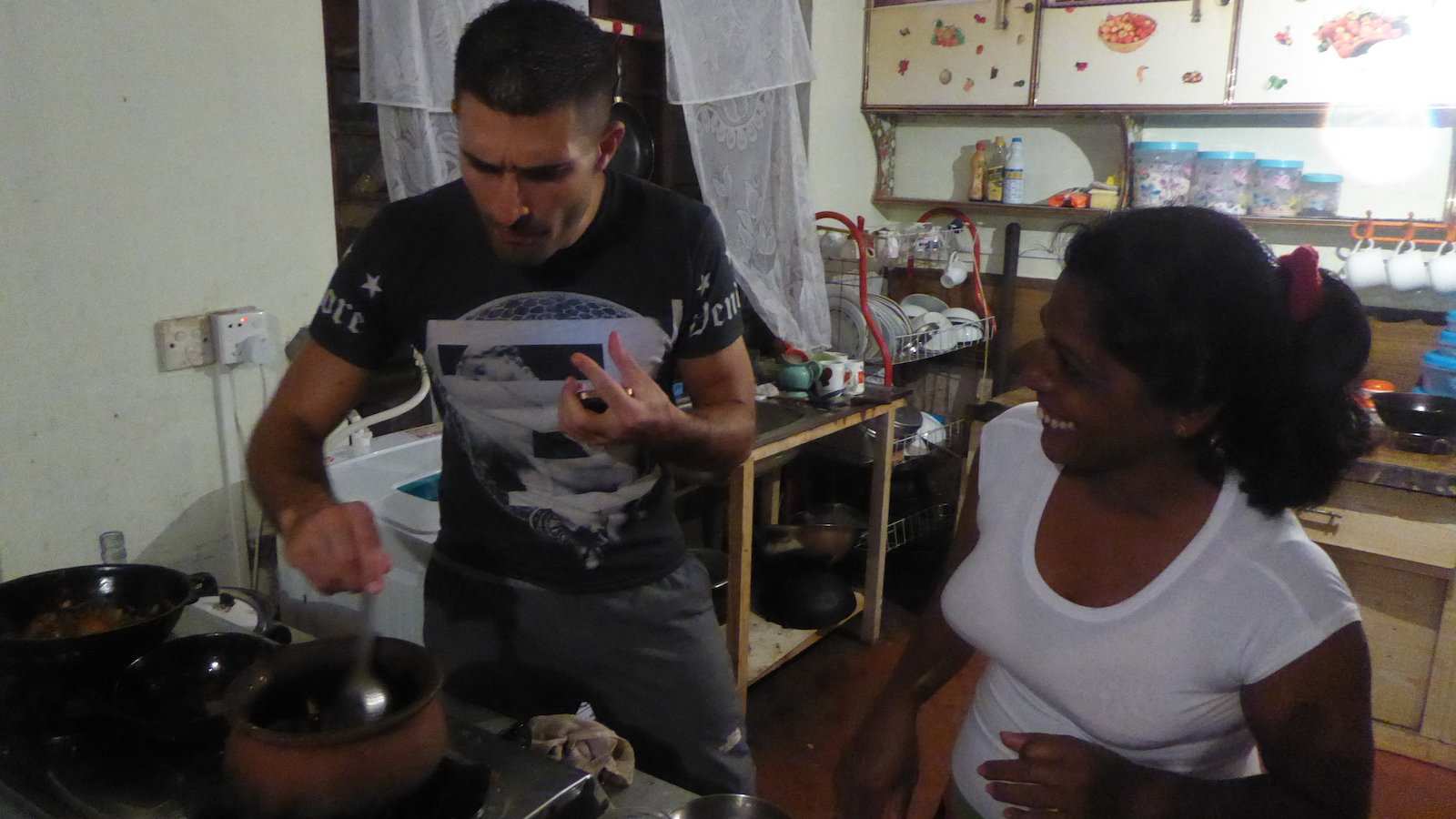
1. Rice and Curry
Rice and Curry is the traditional staple dish in Sri Lanka. It's eaten everywhere, usually twice a day by almost everyone. When you see “Rice and Curry” in Sri Lanka, it refers to several small plates of curry yummies varying from chicken and fish to vegetarian dishes like dal, garlic curry, aubergine curry, pumpkin curry, green bean curry… always served with rice and a few small plates of pickled vegetables.
What struck us the most is the sheer variety of different curry dishes available in Sri Lanka such as jackfruit curry, beetroot curry, pumpkin, pineapple curry…all of them extremely tasty! Rice and Curry is also the most popular traditional Sri Lankan wedding food, in particular meat-based curries.
There is no uniform way of making any of these curries. Recipes differ depending on where you are in the country and the ingredients available to you. Therefore, each one tastes different, just like a Nepalese daal bhat or an Indian thali. Simply put, this makes ‘Rice and Curry' a culinary foodgasm; foodies, this is your mecca!
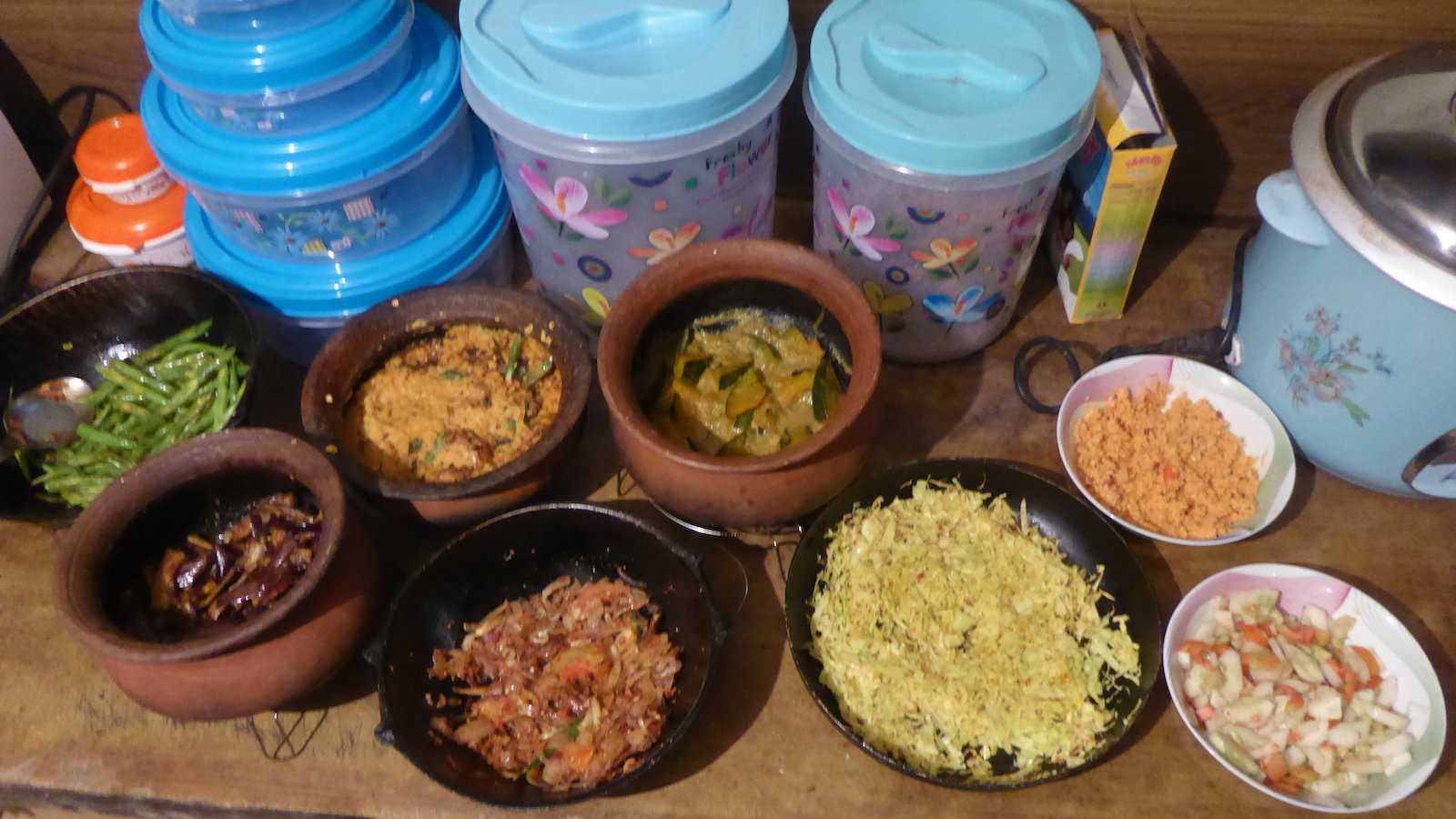
2. Deviled Prawns
As we mentioned already, Sri Lanka is an island, which means seafood lovers will be in heaven here! The term ‘deviled' refers to spicy dishes in Sri Lankan cuisine. Anything with ‘deviled' in the title means you're in for quite a fiery meal! The recipe for deviled prawns will vary depending on where you try it (all the more reason to try it everywhere you go in Sri Lanka!) but has a base of prawns, tomato, chili and turmeric.
Sri Lankan deviled prawns is one of the dishes we learned to make for ourselves while we were traveling in Sri Lanka and we often recreate it at home with the recipe we learned in Negombo. It's the perfect meal for when you need to clear your sinuses or just want to imagine being back in Sri Lanka eating all those heavenly fiery dishes.
One thing you might notice is that prawns in Sri Lanka are rarely, if ever, peeled before cooking. In fact, most Sri Lankans eat them with their shells on!
3. Egg hoppers (Bittara Appa)
Hoppers (appa) are the Sri Lankan version of pancake batter, made with coconut milk and fermented rice flour. They are then cooked in a small wok-like pan so that the dough becomes thick and soft on the bottom, and thin/crunchy around the edges. A fried egg is then added in the middle for serving, kind of like an ‘egg in the hole'!
Sometimes egg hoppers are topped with lunu miris, a type of sambol made with onions, chilies, lemon juice and salt. They're often part of a Sri Lankan breakfast, but you can also find hoppers on the dinner table where they're delicious loaded up with dhals, curry and other fiery sambols.
Egg hoppers are made using a special type of hopper pan but you can still make them at home with a small wok, just make sure it has a well-fitting lid as covering them while cooking is how they get the sort of lacy texture around the edges.
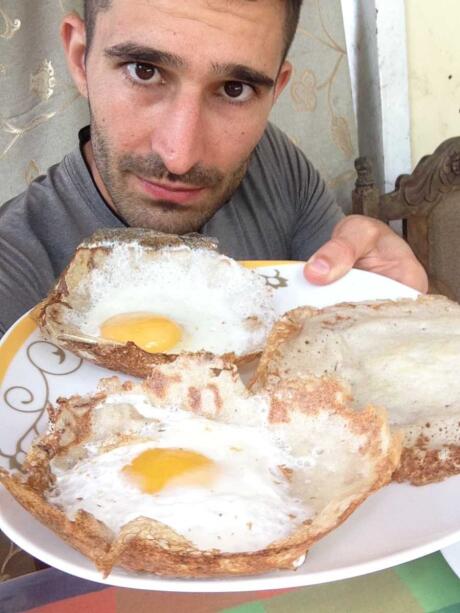
4. String hoppers
String hoppers are the other main ‘hopper' you'll find in Sri Lanka but these ones are made from a thicker rice flour batter base than that of egg hoppers. The batter is then squeezed through a string hopper maker (kind of like a pasta press) into thin noodles which are then steamed.
Similarly to egg hoppers, string hoppers are usually served with a curry and are also popular for breakfast but you might also see them at dinner time where they are delicious when used to soak up the sauces of your meal. In the areas around Kerala, you can also find a sweet version served with coconut milk and sugar.
Honestly we'd be hard-pressed to choose a favorite out of egg or string hoppers, while the texture is different they're both such a yummy addition to any meal! String hoppers are quite fun to eat though, if you want to be like the locals and dip them in your curry with your hands.
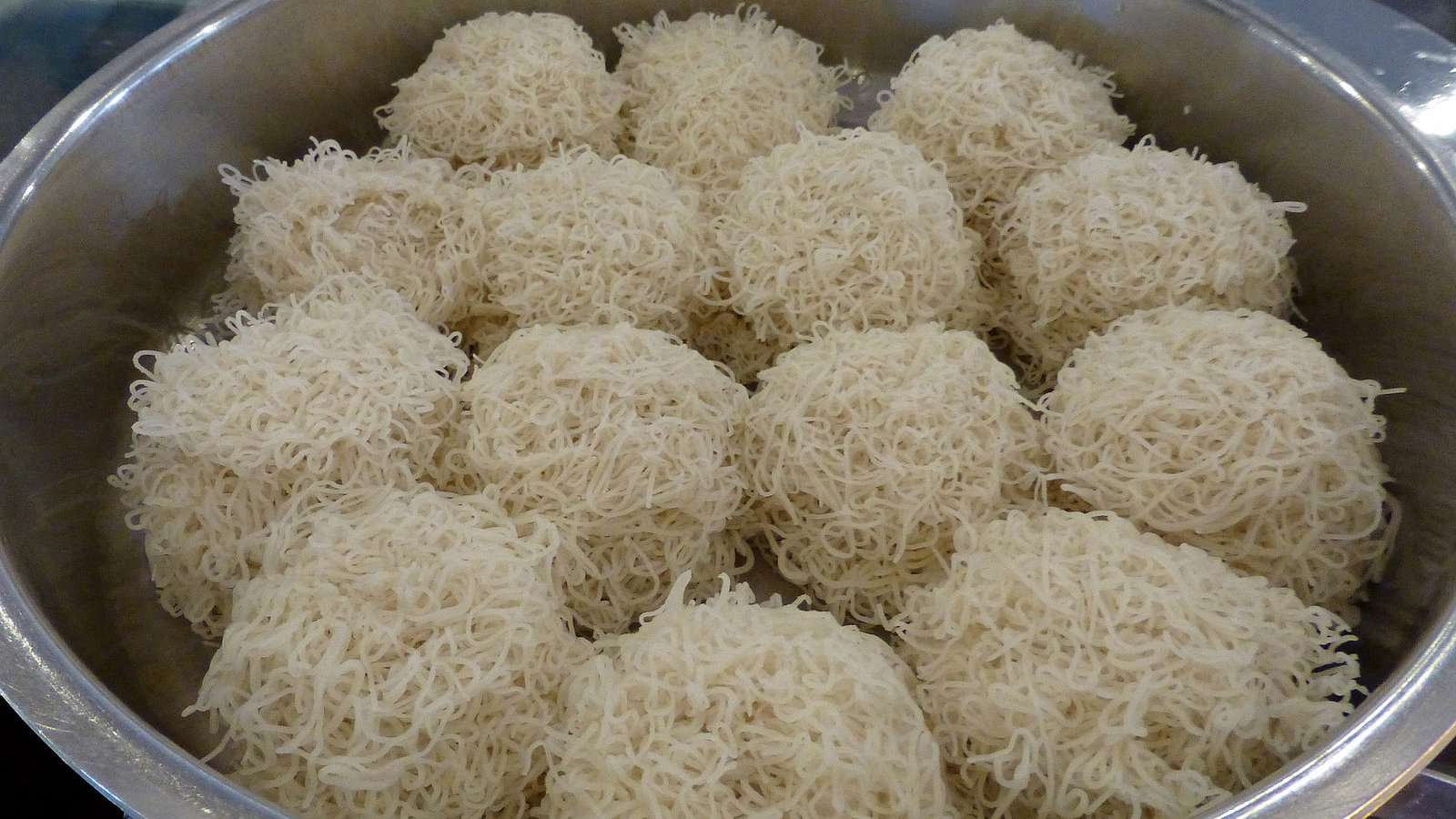
5. Kothu Roti
Kothu (or kottu) roti is a Sri Lankan Tamil dish, which is literally a plate of chopped up roti mixed with curry sauce then served with vegetables and meat or eggs. It originated in Jaffna, in northern Sri Lanka, in the 1960s, as a cheap takeaway meal for lower socioeconomic classes. It has since transcended social boundaries across the country to become a staple that everyone eats and is particularly popular among the young who have it as a midnight snack after a night out in Colombo.
A plate of kothu roti is a bit like fried rice, except the base is roti (bread) rather than rice. It's a very comforting dish, great for when you're really craving a greasy hamburger. If you order it from a roadside stall in Sri Lanka the cook will fry up the roti in front of you with whichever other ingredients you choose, often while singing their own little songs and clanking their utensils on the pan in time!
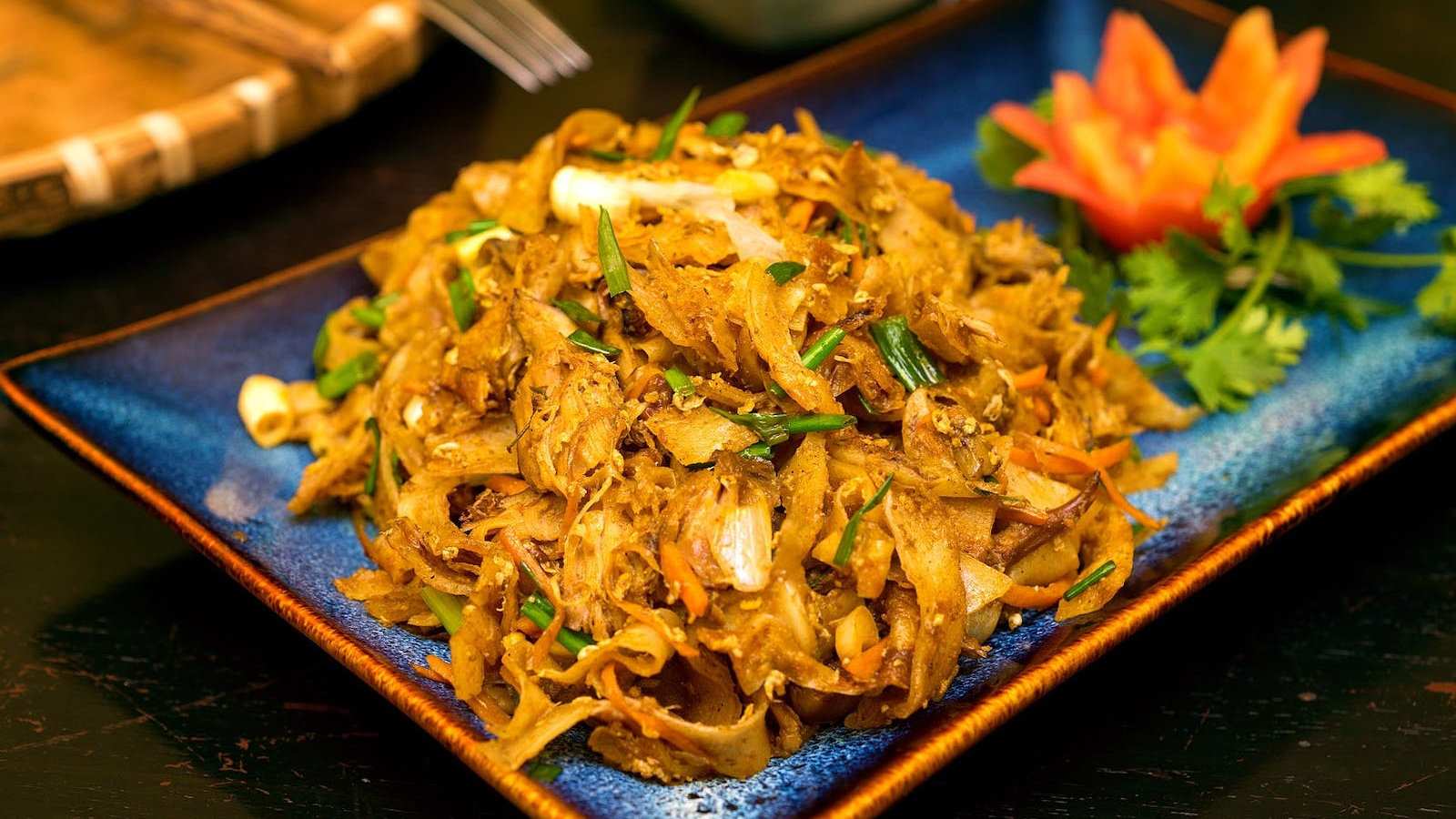
6. Watalappam
Watalappam is an absolutely heavenly Sri Lankan desert introduced by Malay immigrants. It is made from coconut milk, cashew nuts, egg, jaggery (a sweet brown product that comes from sugarcane) and various spices, particularly cardamom, cloves and nutmeg. In Sri Lanka, jaggery is extracted from the kithul tree, so authentic watalappam is difficult to replicate back home.
It's a popular dessert in Sri Lanka, served up at religious festivals (especially by Sri Lankan Muslims at the end of Ramadan) and large celebrations like weddings. We LOVED watalappam! The consistency and flavor kind of reminded us of a custard pudding or perhaps the Sri Lankan version of crème caramel. Watalappam is steamed and usually ends up with three different-colored layers of deliciousness.
Watalappam is usually served up with toppings like roasted cashew nuts or caramelised banana slices, but it's just as delicious by itself. However you have it we're pretty sure you will adore it as much as we do!
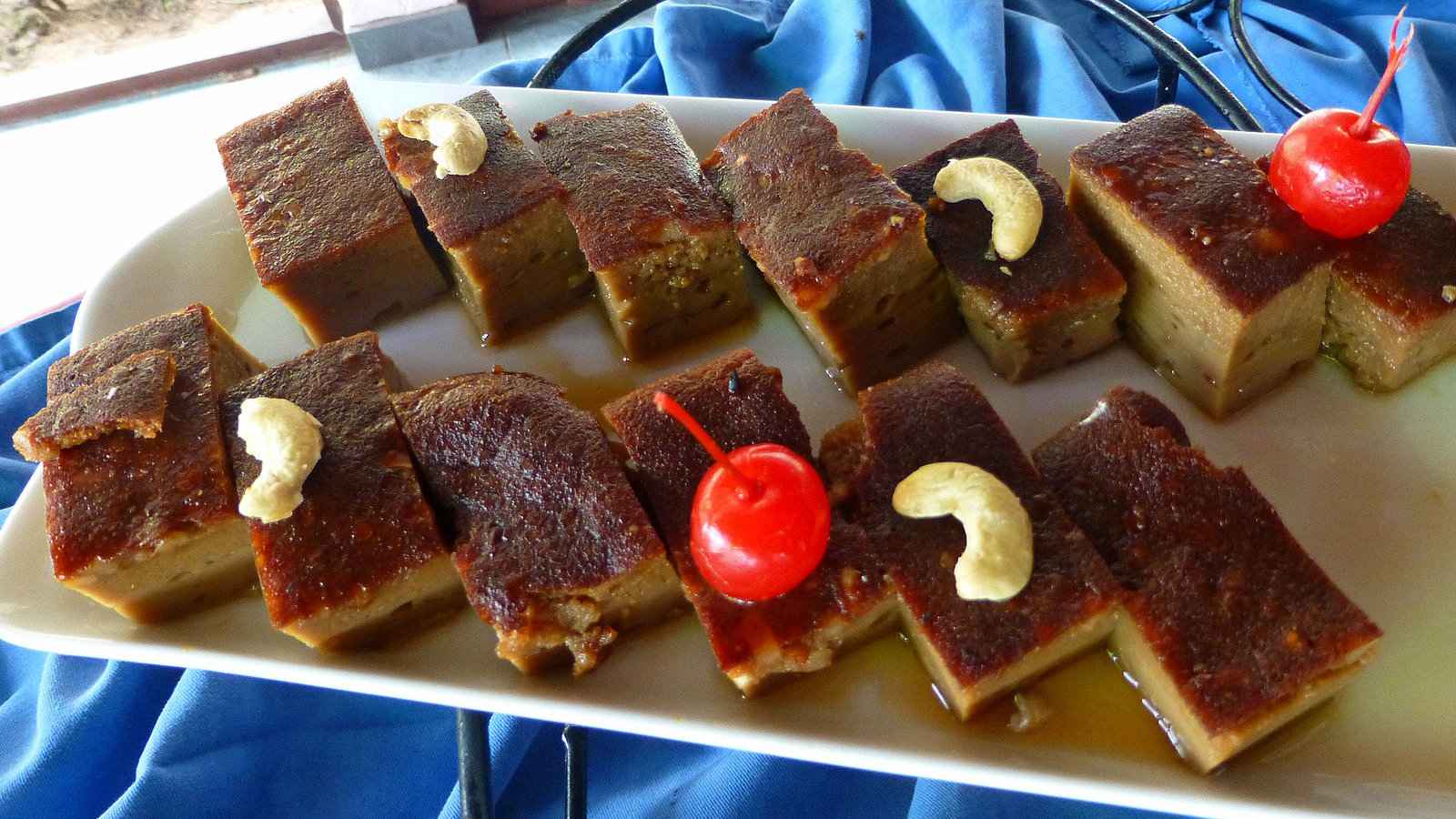
7. Lamprais
Lamprais is a Sri Lankan dish that really shows some of the outside influences on the country's cuisine and how they became regarded as “Sri Lankan” food. The name lamprais comes from the Dutch word lomprijst (which basically means a packet of food) and was introduced to Sri Lanka by the Dutch Burgher people.
Since the name means packet it's no surprise then that lamprais is made by placing rice (that has already been cooked in stock), mixed meat curry, Dutch-style meatballs, aubergine curry and spices inside a banana leaf package that is then steamed. Yes there's a lot of ingredients in there, but somehow it works! Obviously, it's a bit time-consuming to make, which is why lamprais is usually reserved for special occasions.
Lamprais is Sri Lankan comfort food at its best, so spicy, filling and flavorful. We definitely recommend trying some of these mouth-watering food parcels if you see them while you're in Sri Lanka yourself!
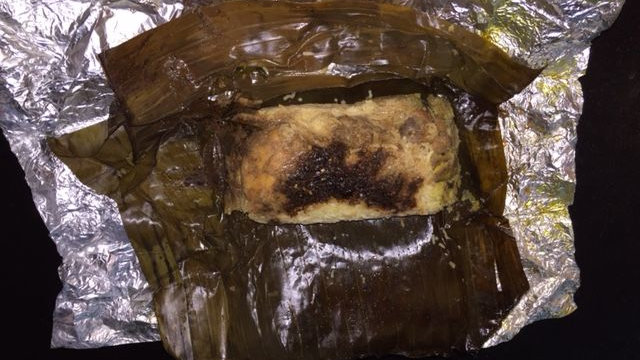
8. Fish Ambul Thiyal
Sour fish curry may not sound like the most appetizing meal but trust us, it actually is! And sour fish curry is exactly what fish ambul thiyal is; a dish that originated in Sri Lanka as a way to preserve fish without requiring refrigeration. Now it's not actually sour, but one of the main ingredients is dried goraka, a tamarind-like fruit that gives the dish it's tangy, slightly sour taste.
Other ingredients in fish ambul thiyal include cubed fish (obviously!), usually tuna, which is sauteed in a blend of spices including black pepper, cinnamon, turmeric, garlic, pandan leaves, curry leaves and the dried goraka.
The fish is simmered in the other ingredients with a bit of water until there's no liquid left, just a thick coating of the spice mixture which makes this dish what's known as a dry curry. It's not dry in a bad way though, we found fish ambul thiyal to be really delicious with some rice so do be adventurous and try some!
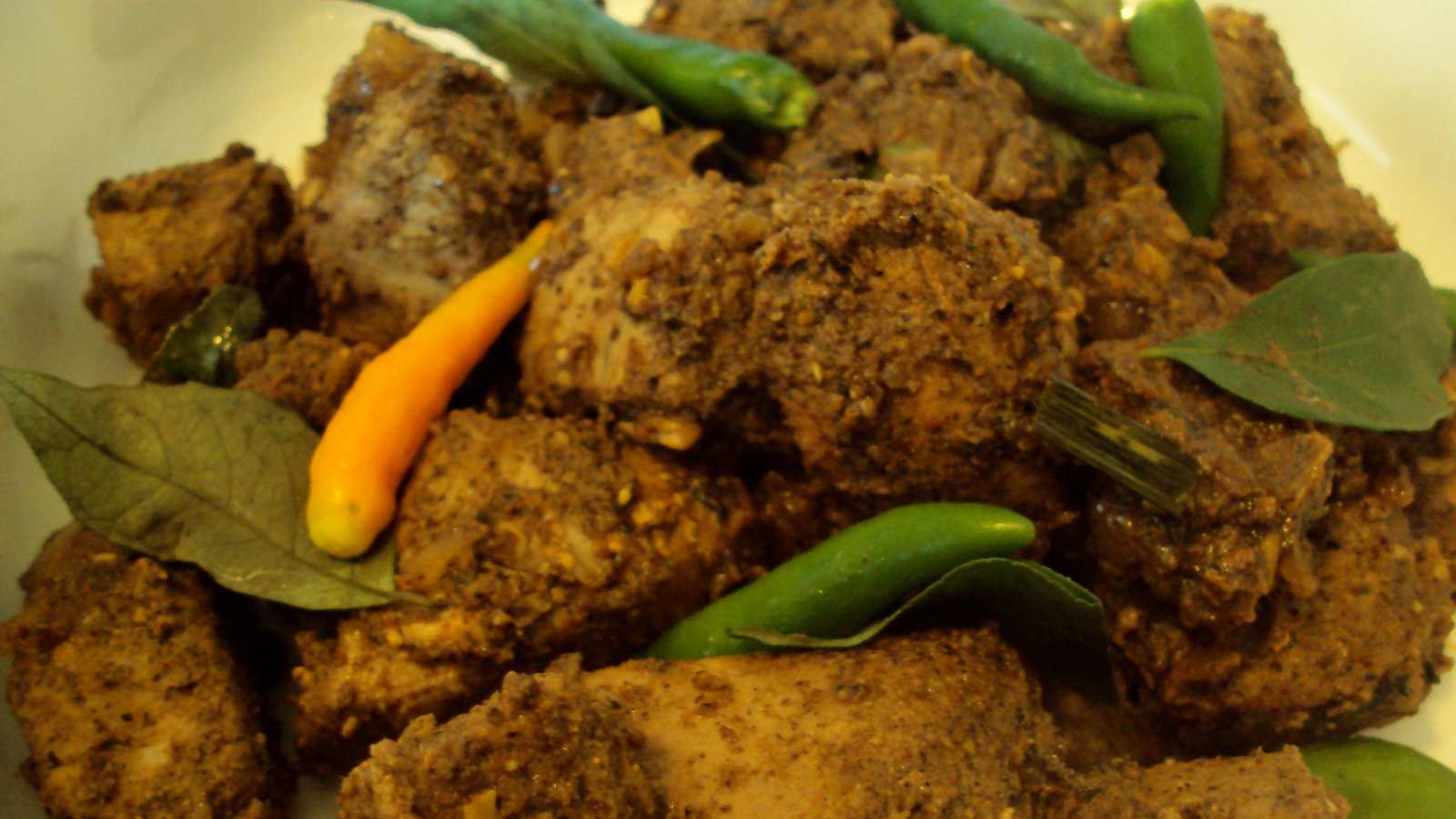
9. Wambatu Moju
Wambatu moju is the Sri Lankan dish that not only has a funny name (anyone else thinking “wombat mojo” or is that just us?) but is also super tasty AND vegetarian to boot! Wambatu moju basically means pickled eggplant and is often served as a side dish with other meal parts. It's made by deep-frying slices of eggplant then caramelizing those slices with sugar, vinegar, red onions, green chillies, mustard seeds, and turmeric.
Eggplant is perfect for making wambatu moju, as it gives a meaty texture to all the delightful flavors. The eggplants (or aubergines) you will find in Sri Lanka are a bit different from what you might be used to, they're longer and skinnier than western varieties.
This dish absolutely melts in your mouth when you try some, combining sweet, sour and salty tastes in a sensational dance of flavor. Yes, we're almost waxing poetic just thinking about a plateful of wambatu moju! Obviously, you will encounter regional variations on the recipe, but it's almost guaranteed to be mouth-watering wherever you go.
10. Kiribath
For something quite simple, the Sri Lankan dish of kiribath is one that is rich in meaning. It's basically made by cooking rice with coconut milk until all the liquid is absorbed, then shaping the sticky rice into blocks to be cut and served like slices of cake. It's often eaten with lunu miris, a sambol chili sauce we mentioned earlier, and sometimes sweetened with jaggery.
What makes kiribath so rich in meaning? Well, traditionally kiribath is made for special occasions, particularly ones that mark important times of life like birthdays, New Year or just the first day of the month. This is also one dish that seems to be completely unique to Sri Lanka, with no outside influences recorded.
It's thought that kiribath is what the Buddha ate immediately after achieving enlightenment, which is what led the dish to be so important to events that represent new beginnings or transitions in life.
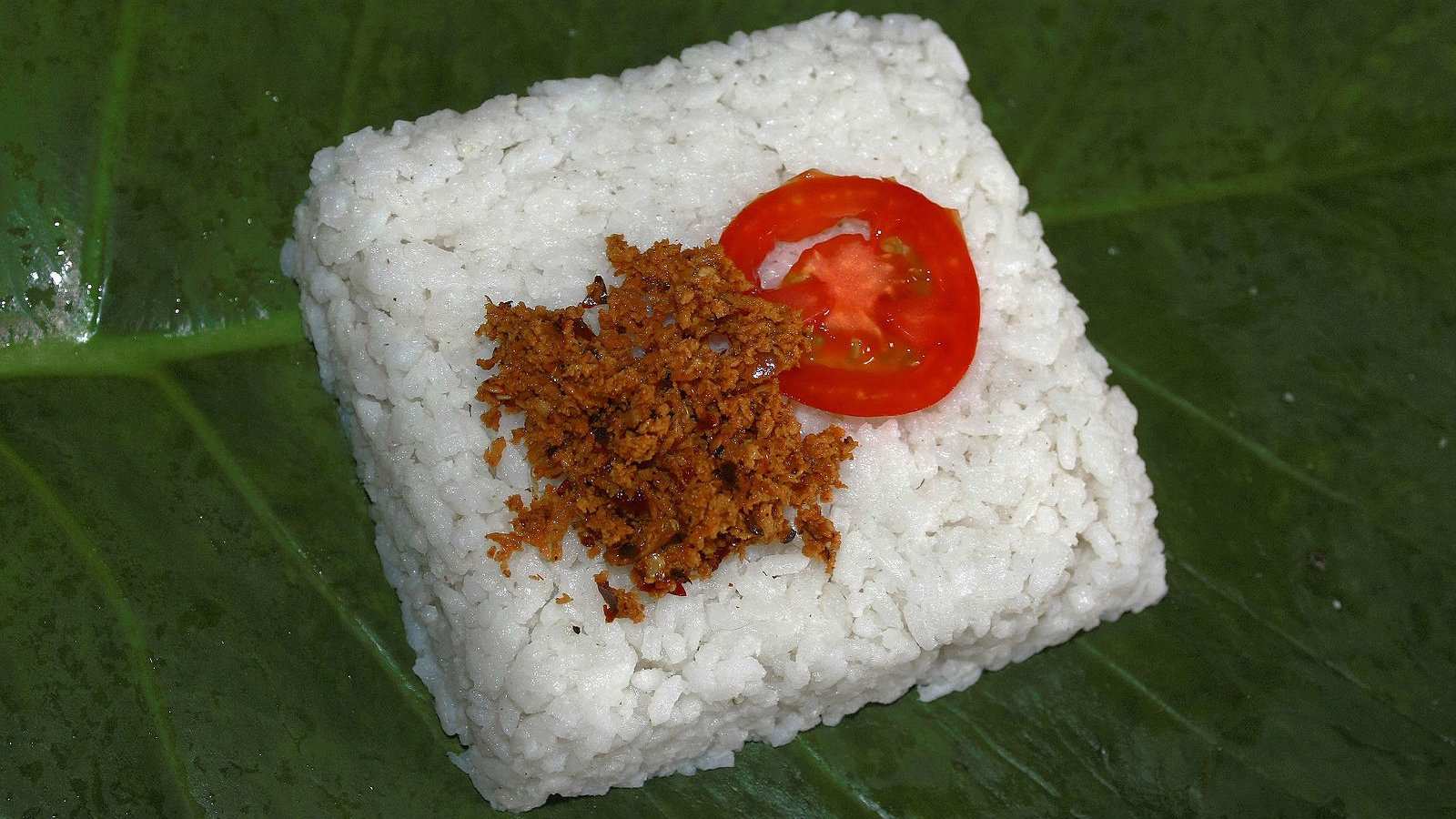
11. Gotu Kola Mallung
You might be starting to think that Sri Lankan food is all about rice and meat but never fear, you can also find yummy green dishes like this one! Gotu kola is a type of medicinal herb known as Asiatic pennywort in English and it is often used as the main ingredient in a Sri Lankan mallung – or shredded vegetable side dish.
Most meals in Sri Lanka have one or two mallung dishes as a way for locals to get their vitamins. Mallung means mixed and while there are plenty of different types, our favorite was the gotu kola mallung made with gotu kola, onion, chillis and coconut.
Gotu kola mallung is a tangy and refreshing dish, a little bit like a kale salad. We certainly gobbled it up whenever we found it, while feeling good about the nutrients we were putting in our bodies alongside all the delicious rice and curry meals.
12. Sago Payasam
Sago payasam (also called Javvarisi payasam) is a yummy dessert that's popular at Sri Lankan Tamil weddings, festivals and New Year celebrations. It's similar to kheer, an Indian pudding made from rice, except the Sri Lankan version uses sago pearls which are also very close to tapioca pearls in shape, size and consistency.
The difference between sago pearls and tapioca pearls is that sago pearls are made using the extract of palm trees while tapioca pearls are made from the roots of the kassava plant. Sri Lankan sago payasam is made by cooking sago pearls in coconut milk with jaggery, saffron and cardamom, then adding in roasted cashews with raisins.
The resulting pudding is thick and comforting, like a sweet porridge with the interesting texture of the springy balls – if you like bubble tea you will enjoy it! It's also equally as delicious warm or cold, but in the heat of Sri Lanka we usually preferred it cold so we could cool down a little…
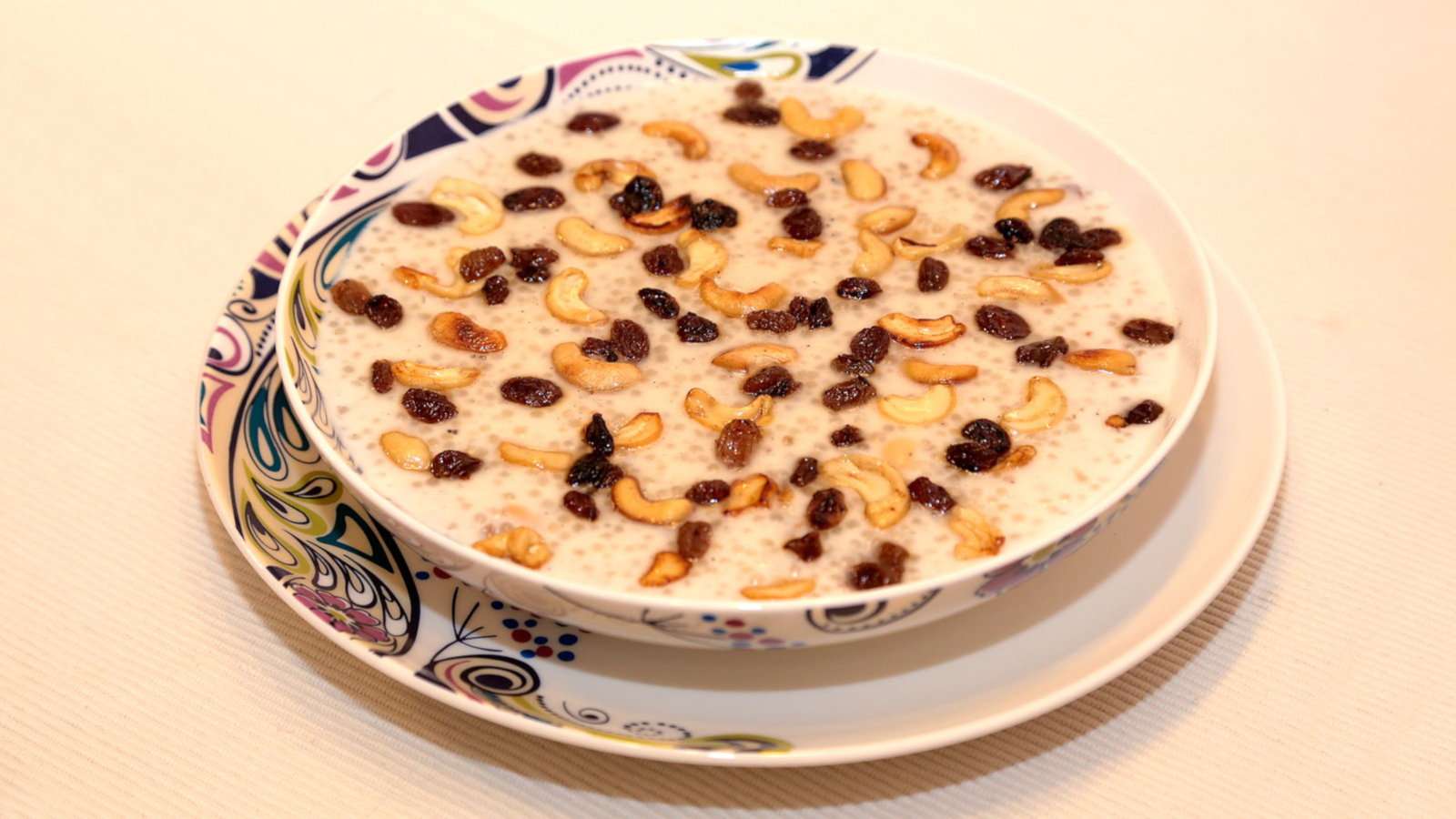
13. Sri Lankan Love Cake
Dating all the way back to at least the 16th-century when the Portuguese controlled Sri Lanka (then named Ceylon), Sri Lankan Love Cake was adapted from a Portuguese semolina cake with the addition of the Sri Lankan spices nutmeg, cinnamon and cardamom.
It's not known exactly if it was called Love Cake because local women made it to give to potential love interests or if it's because the long preparation time makes it a ‘labor of love' but, either way, this sweet cake has become a symbol of love in Sri Lanka, usually served at weddings, Christmas or birthdays.
Sri Lankan Love Cake is made with chopped up (or whizzed in a food processor nowadays) cashews, semolina, sugar, eggs, butter, honey, puhul dosi (candied winter melon or sometimes pumpkin preserves or candied ginger is used instead) and lots of aromatic spices. While the process is fiddly you end up with the most divine tasting moist-on-the-inside, chewy-on-the-outside, fragrant, nutty, fruity cake you've ever tasted!
14. Konda Kavum
Konda kavum (or kevum) is another popular Sri Lankan dessert we loved that is often served at traditional Sri Lankan weddings alongside watalappam but is more famous as a Sinhala and Tamil New Year food. Also known as an oil-cake, we initially thought the Dutch must have brought their famous oliebollen to Sri Lanka, but apparently, they have been around since even before the Dutch colonization of Sri Lanka!
These Sri Lankan oil-cakes are made using rice flour, kithul (or sugar-palm) treacle and spices like fennel seeds, aniseed and cardamom. The balls are then deep-fried, but what makes them extra-special is the little ‘top-knot' fashioned during cooking that is meant to represent the bun of hair worn by native women. This mound is made by using a long stick to swirl the batter while it is frying and it's not as easy as it looks.
If you are ever in Sri Lanka during their New Year (in April) and see people selling konda kavum, make sure you stop to watch the clever technique and, of course, try some of these luscious naughty treats!
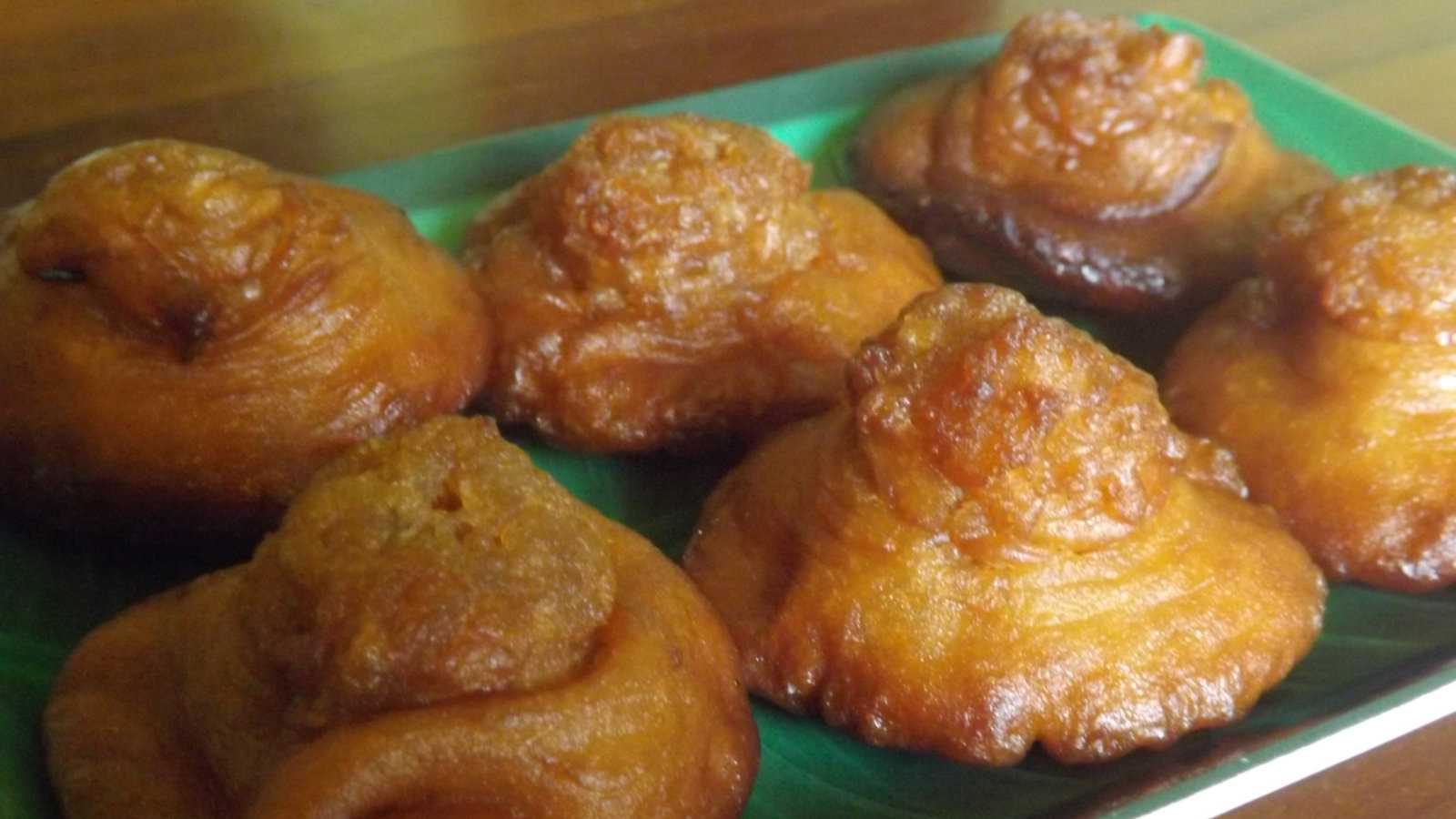
15. Ceylon Arrack
Arrack is a distilled strong alcoholic drink made from the fermented sap of the unopened flowers of a coconut palm. Due to its high concentration of sugar and yeast content, the captured liquid naturally ferments into a mildly alcoholic drink. This is then distilled again to reach a high alcohol content of 33-50%.
Ceylon arrack tastes a bit like whiskey or rum and is usually made into a cocktail mixed with coke or lemonade, or it can be flavored. Don't confuse it with the similarly-spelled arak from the middle-east, which tastes like aniseed. Like many of the entries in this post, it's a popular addition at a Sri Lankan wedding.
Since Sri Lanka is the largest producer of coconut arrack you'll be able to sample many different brands while exploring the country. What's especially interesting about Ceylon arrack is that nothing other than water is added to the sap during the distillation process when creating the drink!
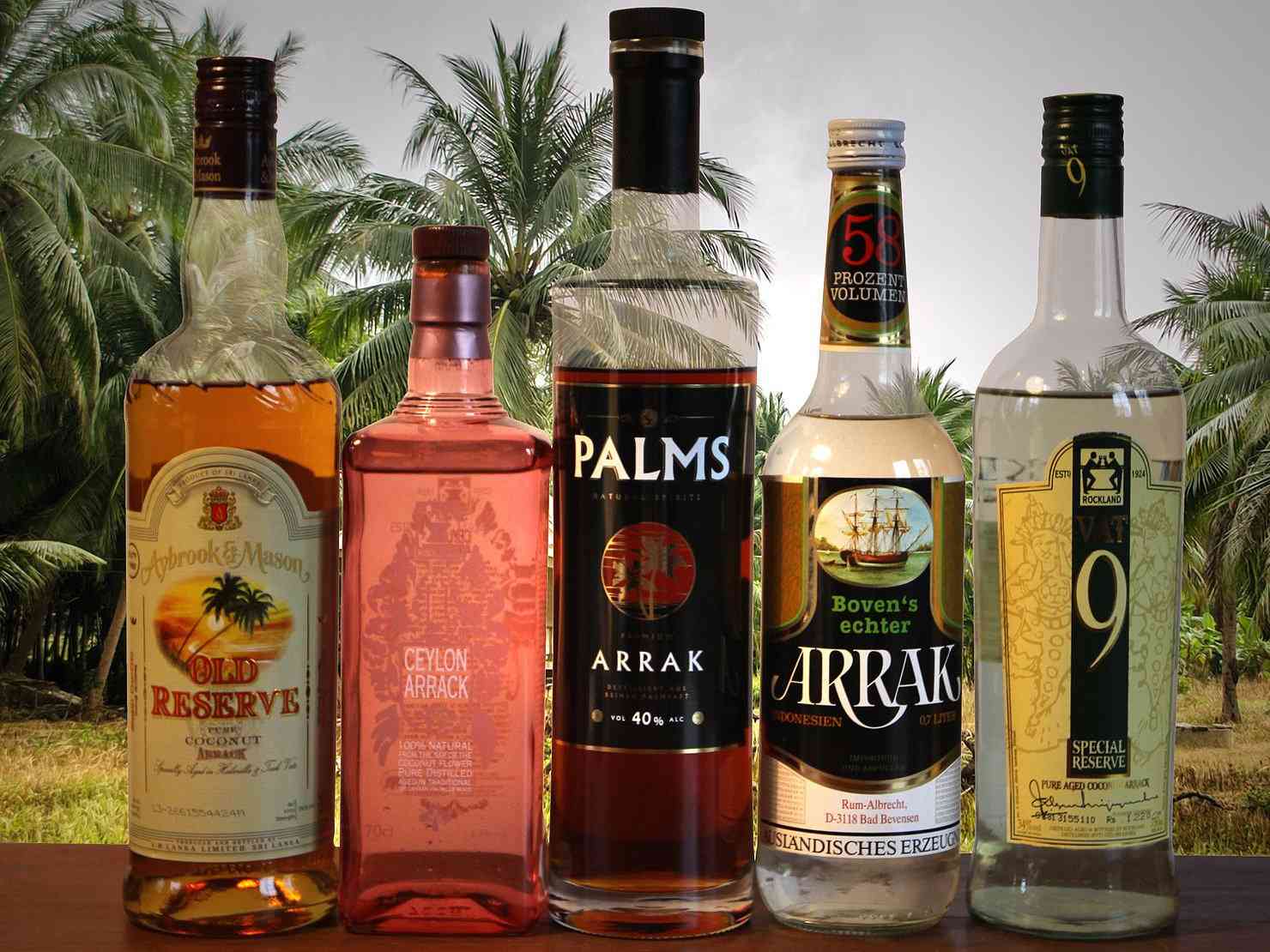
16. Rava Kesari
Sri Lankans sure know how to make semolina taste superb. Kava Kesari is another scrumptious Sri Lankan dish with semolina as the base, a kind of very soft cake or almost-solid pudding, but don't worry, it's much easier and quicker to whip up yourself than the time-consuming Sri Lankan Love Cake!
Rava Kesari can be served for breakfast, as a dessert or just a snack, sometimes you'll find it as an accompaniment to Sri Lankan tea and it's often made during festivals or special occasions. It's made with roasted semolina, ghee, Kesari (saffron), cashews, raisins, milk, sugar and cardamom. There's a lot of stirring involved but eventually, you'll get a lovely yellow cake topped with cashews and raisins.
This is a mouth-watering comfort food that always cheers us up when we make it at home on a grey day. The saffron yellow is so cheerful and we are transported back to Sri Lanka when we taste this sweet pudding.
17. Mutton Rolls
Sri Lanka's muton rolls are the perfect introduction to “short eats”, the country's variety of snacks that are easy to eat on the go and you will find being sold on street corners as well as served up if you visit a local's home at afternoon tea time. Many short eats are deep-fried, as stuffing ingredients inside of rolls and deep-frying them makes for a quick mini-meal on the go.
Mutton rolls are one of the quintessential short eats that are not only available in Sri Lanka but even quite easily found in parts of London! They kind of look like Chinese spring rolls, except the wrapping is traditionally a pancake that's then crumbed before deep-frying, rather than a spring roll wrapper.
Inside these little parcels is the delicious filling consisting of mutton, onion, potatoes, curry powder and lots of different spices which can differ depending on who is making these amazing rolls. We love them with a spicy dipping sauce to really keep those fiery flavors going!
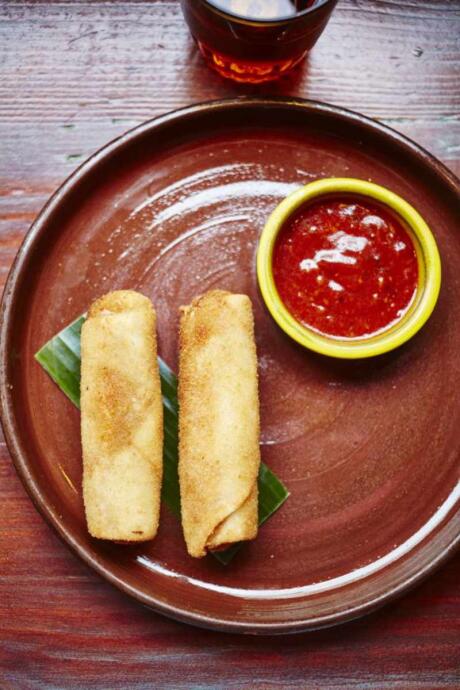
18. Achcharu
It's got a funny name (kind of sounds like a sneeze, right?) but it's a simple, and simply delicious, food – Sri Lankan pickle! Well, technically, it's a medley of pickled vegetables, but they can be used as a side dish or a relish on other dishes.
Achcharu is a pickle that has it's roots in Malaysia, as it was brought to the country by the Malay community. The Sri Lankans embraced it with both hands and it's now so popular you are unlikely to attend a feast or wedding buffet without it. Anytime we saw some of this colorful stuff on a table we made sure to have some, as its such a yummy mix of sweet, sour and hot flavors.
Recipes for achcharu differ from region to region and even from family to family, so you may try some that are slightly different but the base usually includes a pickling mix made from mustard seeds, chili powder, garlic, ginger, vinegar and sugar.

Advice for LGBTQ travelers to Sri Lanka
Sri Lanka has retained its archaic colonial anti-gay laws, which whilst are rarely enforced, in practice gives licence to corrupt police officials to elicit bribes from the LGBTQ community. As a gay tourist, however, people are more respectful to you, regardless of your sexuality. We had no problems booking a double bed in the hotels and guesthouses we stayed at throughout the county. In public, however, we would recommend exercising caution in relation to PDAs. Read more in our interview with Kaluu from Colombo about what gay life in Sri Lanka is like from a local's perspective.
See more in our Sri Lanka travel video:
For more inspiration:
- While you're in Sri Lanka don't miss out on an elephant safari at Udawalawe
- You can even spot Blue Whales in Mirissa, Sri Lanka
- If you're heading to India, make sure you visit the holy city of Varanasi
- And read about our experience travelling as a gay couple in Kerala, India
- Find out why India is safe for gay travellers
- These are the most gay friendly countries in Asia to explore as well
- For more fun ways to travel check out these gay cruises around the world
Like this post? Pin it
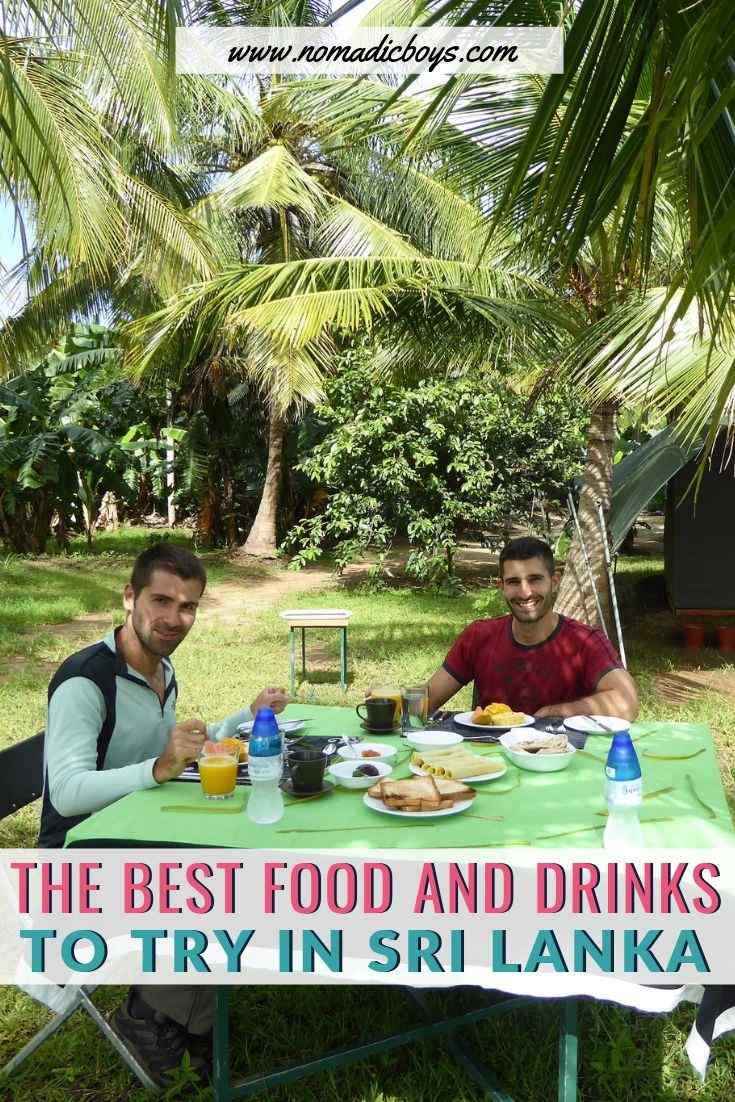

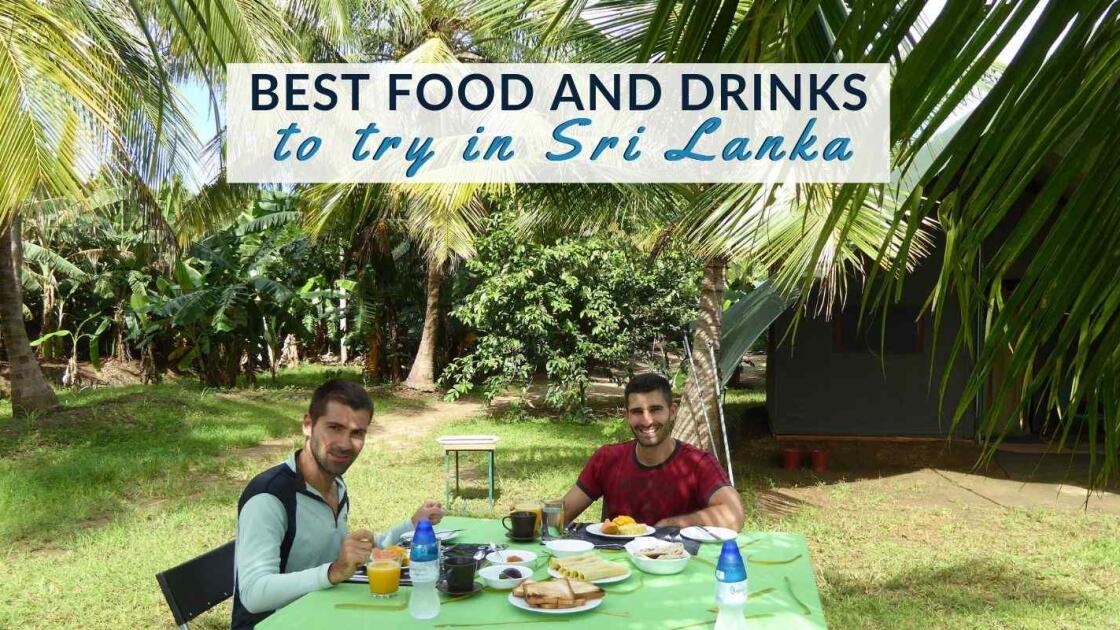

Wellness Travel Diaries
Friday 8th of January 2021
Wow, these dishes look amazing! I didn’t realize that curry was a traditional dish here. I’m a curry fanatic and vegan-ish so hearing you describe all the various types had me drooling. So did the Kiribath, and Sago Payasam. I’ve never tried Sri Lankan food, but desperately want to try it and visit.
Stefan Arestis
Saturday 9th of January 2021
You'll love it :)
Sam k
Thursday 31st of October 2019
You have covered lots of things in your article about Sri Lankan foods. I have a good experience with them and always love the taste. String hopper is one of my favorite Sri Lankan breakfast. I love to eat them with spicy chicken curry and coconut sambal.
Stefan Arestis
Thursday 31st of October 2019
Thanks!
Sunday 7th of August 2016
5
Caryl
Thursday 19th of February 2015
Haha, just love your faces in those photos! Sri Lankan food is awesome and you've done a great round up of it in this post... We ate so much during our 2 month trip there, those stuffed rotis were too good to resist, plus all the fried snacks too. Hoppers (both varieties) are just one of the best foods and I wish that you get get them everywhere on the planet! So good for vegan travelers like us, must admit we got a bit far from all the eating!
Nomadic boys
Thursday 19th of February 2015
Hi Caryl, thanks a lot for your message and kind words :)
OMG- the food awesome right? We were just impressed by the massive variety of curries they make from basically any fruit or veg... Jack fruit and pineapple curry FFS- who would have thought!! One of our favourite cuisines on pur travels to date by far.
Mingyi
Sunday 15th of February 2015
Stumbled upon your blog fom Raja & Whale Facebook page and what a nice prep read to my trip that's happening on 19 Feb :)
Nice to e-meet you guys on this blog and will be checking out for more great travel stories!
Cheers, Mingyi / F Singapore
Nomadic boys
Sunday 15th of February 2015
Hi Mingyi, thanks for dropping by and for your comment.
You're in for a great time with Raja and the Whales- they take good care of you and are so friendly.
Lovely to e-meet you too. Are we stalking each other yet on FB?